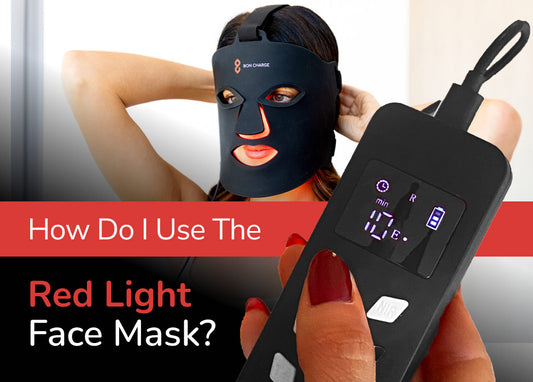
The numbers on your prescription are the most important details. But did you know that another number also impacts your prescription glasses experience? It’s called the lens index, and while it won’t necessarily impact your ability to see with your new glasses, it will impact the overall look and feel of your new glasses.
As such, it’s important to take the time to figure out which is the right lens index for you. In this blog, we’ll explain what the number means, the difference between lower and higher index glasses, and how to choose the right one for you.
Understanding Lens Index
The lens index refers to the effectiveness with which a lens material can bend light. It doesn’t necessarily impact the vision correction properties of the glasses — if your prescription glasses are suitable for you, then they’ll help you see no matter the lens index of the glasses.
What it does impact is the thickness of the lens. In the past, higher prescriptions required thicker lenses. Advancements in lens technology added lens index, also known as refractive index, into the equation. With this, a strong prescription doesn’t necessarily require thicker lenses. With high index lenses, the lens can be thin, and thus less heavy and more comfortable.
The lens index has a range from 1.50 to 1.74. Not only do higher index lenses bend light more efficiently, but they’re also made from more advanced lens materials. As such, high index lenses are the thinnest and lightest.
If you have a high prescription, then this can be highly valuable, as you don’t have to settle for high lens thickness if you don’t want to. They’re suitable for both rimless or semi rimless frames and can be thought of as a stylistic choice as much as a comfort choice. Many people don’t like to have thicker lenses for any number of reasons.
Different Types of Lens Index
Now that we’ve clarified the meaning of lens index, let’s dive into the options you have available to you. There are a number of different lens index lenses available, with some better suited to certain prescriptions than others.
You’ll generally find lens index in the following sizes:
- 1.5 Standard
- 1.56 Mix-Index
- 1.57 Thin and Light Index
- 1.59 Standard Polycarbonate and High Index
- 1.74 High Index Lenses are the thinnest and lightest
1.5 Standard
1.5 standard index lenses are just what they sound like: the standard offering. It’s the most common index lens type and offers super clear clarity. These plastic lenses are the most affordable option, but they’re not suitable for everyone. They’re best for people with prescriptions of +/-2.25 prescriptions or less.
1.56 Mid-Index
These lenses are slightly lighter and thinner than 1.5 standard lenses. They’re suitable for people with prescriptions on the lower end of the scale. Though they’re around 15% thinner than 1.5 standard, they’re still strong and are generally recommended for people with weaker prescriptions who have an active life.
1.57 Thin and Light Index
If you’re looking for lenses in the mid-range, then 1.57 lens index lenses could be the option for you. They’re significantly thinner than standard issue lenses and are suitable for people with slightly stronger prescriptions (around +/-3.o).
1.59 Standard Polycarbonate and High Index
The standard polycarbonate and high index 1.59 lenses are made of a thin, light, and strong material. Due to their high flexibility, they can be worn for a long time without discomfort, and they’re also impact-resistant, making them ideal for people with an active lifestyle.
1.61 High Index
Most people will be happy with 1.61 high index lenses. They refract more light than 1.59, yet they’re as thin and strong as any other option. If you have a prescription of around +/-4.0, then they’re worthwhile looking at.
1.67 high index lenses
These high index lens standard index lenses are on the upper end of the scale. Made from a super durable and strong material, they allow people with a strong prescription to enjoy the benefits of thin lenses.
High Index 1.74
1.74 high index lenses are the most advanced lenses on the market. They’re 50% lighter and 20% thinner than 1.56 lenses, making them the go-to option for people looking for style and comfort in their high prescription glasses.
How to Choose Your Lens Index
You’ve seen the options available to you. Now, how do you decide which lens index is the right one for you? There are several aspects that will influence your decision, including your prescription strength, lifestyle, and general preferences.
If you have a high prescription
By ‘high prescription,’ we mean it’s greater than +/-4.0. Historically, prescriptions in this category would require thick lens glasses, but that can result in a ‘bug eye’ look and also just be plain old uncomfortable to wear all day since the glasses will be heavier.
In this scenario, it’s best to opt for a high index lens. That’ll help to keep your glasses as light as possible.
If you have a low prescription
If you have a weaker prescription, then you’ll have the flexibility to choose whichever type of index lens you prefer. You may still want to opt for a high index in order to make your glasses as light as possible, but you probably need anything greater than 1.57. It’s important to keep in mind that the thinner your glasses are, the less durable they’ll be. So if you have an active lifestyle that puts your glasses through their paces, then it’ll be best to opt for a lower lens index since they’ll be stronger. 1.59 polycarbonate lenses would also be a good option, since strength is one of their assets, though they may not be the best option if you’re on a budget.
Buy from BON CHARGE Today
If you’re looking for exceptional glasses at an excellent price, then be sure to check our prescription collection here at Bon Charge. We offer a range of lens index glasses, so you can have the viewing experience that suits you. Simply browse our glasses, place an order, and it won’t be long before you have your dream glasses.



